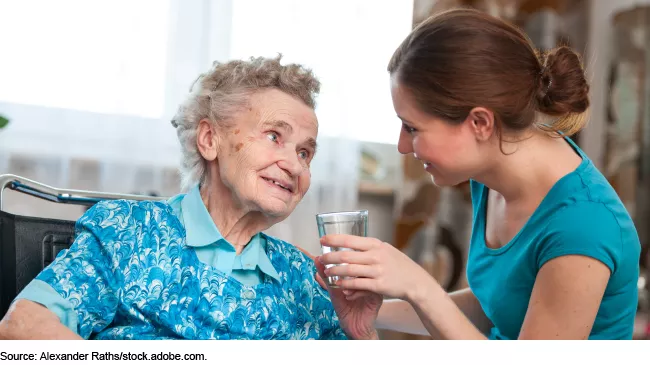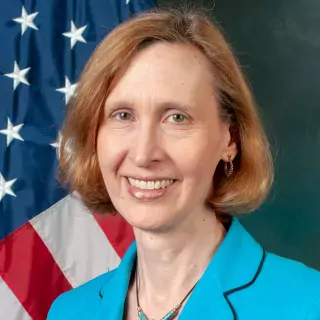Millions of Caregivers May Be Under Age 18. How Do We Support Them?
When a loved one needs care, family members often step in to help out. And for many families, those caregivers are children. In fact, studies estimate that millions of family caregivers may be under the age of 18.
Today’s WatchBlog post looks at our new report on young caregivers and what could be done to better support them.
Image

What we know about young caregivers and how this role impacts them
Caregivers of all ages offer emotional support and help family members with a variety of daily living tasks, such as walking, bathing, feeding, driving, and taking medication. While this assistance is important, its generally unpaid work.
There’s not much federal data on caregivers under age 18. School-based surveys in three states (Colorado, Florida, and Rhode Island) provide a small glimpse into who this population is. For example, the data tells us that:
- More middle schoolers than high school students were taking care of a family member
- Non-White students generally played a larger caregiving role than White students
- The number of male and female students who were caring for family members was similar across all three states.
Being a caregiver can have a positive impact. For example, some young people said that tending to family members contributed positively to their development. They said it taught them empathy, patience, and resilience, as well as responsibility, time management, and problem-solving skills. Some also said that serving in this role strengthened their family relationships or influenced their career choice.
“It changed my career path from theater to social work,” said one survey respondent. “I wouldn’t have found that career path without caring for my grandma.”
Being a caregiver can also have negative effects. We also know about the challenges these young people face balancing responsibility for someone else with their own needs and responsibilities.
For example, some GAO survey respondents reported experiencing stress and anxiety because of concerns about their family member’s health condition. Some also said their own mental and physical health, peer relationships, and education suffered while providing support for a family member.
And a separate Florida survey showed that young caregivers reported having lower grades and difficulty completing homework because of competing family responsibilities.
“My relationships with friends were most affected because it was hard for people to be comfortable around my brother when they hadn’t grown up around [people] with disabilities,” one young caregiver said, “It’s difficult for people to understand.”
Many of these young people also identified needed supports—from counseling to school accommodations—that could help them with challenges they were facing.
Image

What supports are available for young caregivers?
The Departments of Health and Human Services and Veterans Affairs both offer supports like counseling, referrals, and short-term breaks for family caregivers. But their programs largely focus on adults in these roles.
Under HHS’s program, states and service providers can extend supports to family caregivers younger than age 18 in certain situations. But states and service providers may not be aware of this flexibility because HHS hasn’t shared this information on its public website. By doing so, states and service providers may be able to serve more people that qualify for support and get them the assistance they need.
In addition, HHS is mandated to work with other federal agencies to oversee the development of a national strategy for recognizing and supporting family caregivers. England’s national policy to support young caregivers could inform any policy efforts in the United States. In England, local governments identify and assess the needs of young people in such roles. They coordinate with city agencies, charities, and schools to provide supports. For example, some provide lunchtime groups for young caregivers and use school newsletters to raise awareness about available help.
Learn more about these efforts and the challenges young caregivers face by checking out our full report.
- GAO’s fact-based, nonpartisan information helps Congress and federal agencies improve government. The WatchBlog lets us contextualize GAO’s work a little more for the public. Check out more of our posts at GAO.gov/blog.
- Got a comment, question? Email us at blog@gao.gov.
GAO Contacts
Related Products

GAO's mission is to provide Congress with fact-based, nonpartisan information that can help improve federal government performance and ensure accountability for the benefit of the American people. GAO launched its WatchBlog in January, 2014, as part of its continuing effort to reach its audiences—Congress and the American people—where they are currently looking for information.
The blog format allows GAO to provide a little more context about its work than it can offer on its other social media platforms. Posts will tie GAO work to current events and the news; show how GAO’s work is affecting agencies or legislation; highlight reports, testimonies, and issue areas where GAO does work; and provide information about GAO itself, among other things.
Please send any feedback on GAO's WatchBlog to blog@gao.gov.


